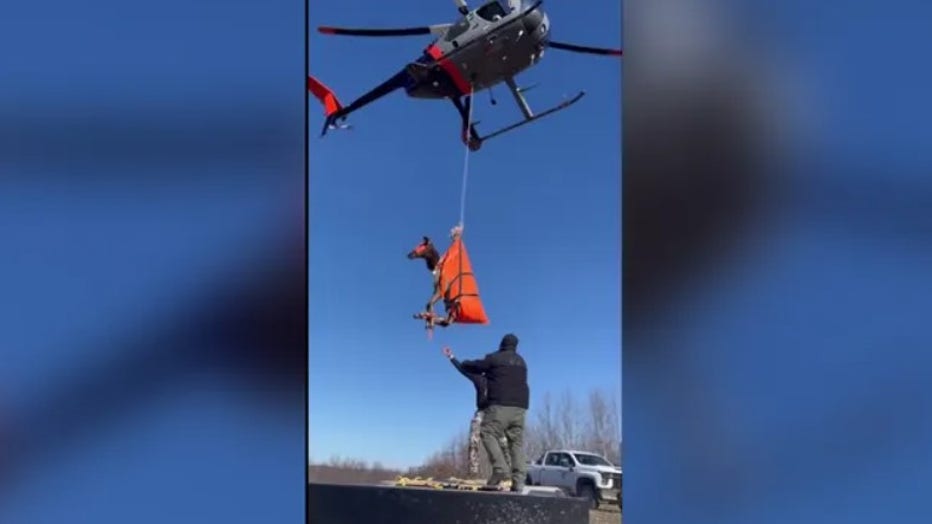Pregnant elk soar through Tennessee skies in state's first-of-its-kind population study

Wildlife officials trap elk in Tennessee in unique calf survival, recruitment study
Pregnant elk are being blindfolded and air-lifted in East Tennessee for scientific research and to better understand the species' population dynamics.
PIONEER, Tenn. - Pregnant elk in Tennessee are being taken on a wild ride through the sky.
It's all part of a groundbreaking study that aims to understand the population dynamics of the species better. Wildlife officials from the Tennessee Wildlife Resources Agency are trapping cow elk in the North Cumberland Wildlife Management Area (WMA) to study calf survival and recruitment.
"This is pretty important," said Garrett Clevenger, the Tennessee Wildlife Resources Agency's elk program coordinator. "This is not something we've done yet."
It's part of a two-year study with the University of Tennessee, the Rocky Mountain Elk Foundation and the Kentucky Department of Fish and Wildlife Resources.
As a helicopter crew captures the cow elk, veterinarians and researchers assess them. Pregnant elk are implanted with transmitters that send GPS signals to track their movements after giving birth.

Pregnant elk in Tennessee are being taken on a wild ride through the sky. (Tennessee Wildlife Resources Agency)
"We're putting a transmitter inside the pregnant cow, specifically targeting those, in hopes that when they give birth in May-June, we'll be able to go out and collar the calves and then monitor them over the course of their life to see when they're actually recruited into the population," Clevenger said.
The area wildlife agents are conducting the trapping covers almost 200,000 acres of mountainous terrain across five counties in East Tennessee. It is the biggest actively managed WMA in the state and is famous for being the habitat of majestic elk. These elk were reintroduced in the early 2000s and have since become one of the most well-known features of the area.
DEER SOARS OVER PARKED CAR BUT FAILS TO STICK THE LANDING AT WORST-POSSIBLE MOMENT
Wildlife officials said they are also investigating potential reasons for the death of the species, including disease and predators.
"Another side project to that is also being able to look at habitat characteristics from both sites," Clevenger added.
Clevenger said it would be very beneficial for them to obtain that information, allowing them to understand the population dynamics of the species better.
Read more of this story from FOX Weather.

